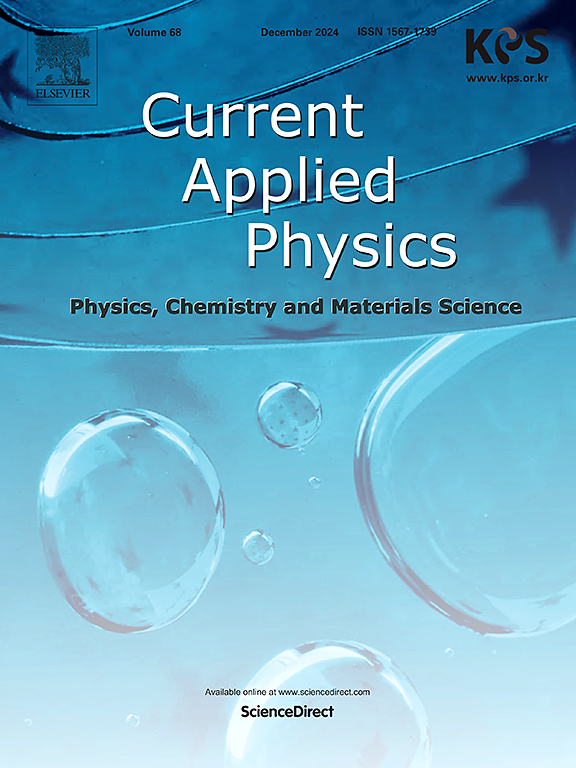Electron-mediated triplet energy transfer in CsPbBr3 nanoplatelet-Rhodamine interface
IF 3.1
4区 物理与天体物理
Q3 MATERIALS SCIENCE, MULTIDISCIPLINARY
引用次数: 0
Abstract
Two-dimensional (2D) cesium lead halide perovskite CsPbBr3 nanoplatelets have received significant notice due to their potential applications in optoelectronics, photocatalysis, energy storage, and sensing. Energy and charge transfer from the nanoplatelet to a dye molecule provides an auxiliary possibility to control the properties of the perovskite-dye hybrid and the interaction of the singlet and triplet states. However, it remains poorly understood for the energy transfer mechanisms of singlets and triplets within hybrid systems. In this paper, the triplet energy transfer from CsPbBr3 nanoplatelets to surface-anchored Rhodamine B isothiocyanate (RITC) molecules is investigated by using the femtosecond time-resolved transient absorption spectroscopy. During the energy transfer, the hybrid experiences electron transfer from CsPbBr3 to RITC to form RITC−, hole transfer from CsPbBr3 to RITC− to form RITC triplets (3RITC∗). The results provide deep insights into the photogenerated carrier dynamics and a new way to tune the energy transfer in a perovskite-dye hybrid.

CsPbBr3纳米血小板-罗丹明界面中电子介导的三重态能量传递
二维铯卤化铅钙钛矿CsPbBr3纳米薄片由于其在光电子学、光催化、储能和传感等方面的潜在应用而受到了广泛的关注。从纳米血小板到染料分子的能量和电荷转移为控制钙钛矿-染料杂化物的性质以及单线态和三重态的相互作用提供了辅助的可能性。然而,对于杂化系统中单重态和三重态的能量传递机制,人们仍然知之甚少。本文利用飞秒时间分辨瞬态吸收光谱研究了CsPbBr3纳米薄片向表面锚定的异硫氰酸罗丹明B (Rhodamine B isothiocyanate, RITC)分子的三重态能量转移。在能量转移过程中,杂化体经历了电子从CsPbBr3转移到RITC形成RITC−,空穴从CsPbBr3转移到RITC−形成RITC三重体(3RITC∗)。该结果为光生成载流子动力学提供了深刻的见解,并提供了一种调整钙钛矿-染料混合物中能量转移的新方法。
本文章由计算机程序翻译,如有差异,请以英文原文为准。
求助全文
约1分钟内获得全文
求助全文
来源期刊

Current Applied Physics
物理-材料科学:综合
CiteScore
4.80
自引率
0.00%
发文量
213
审稿时长
33 days
期刊介绍:
Current Applied Physics (Curr. Appl. Phys.) is a monthly published international journal covering all the fields of applied science investigating the physics of the advanced materials for future applications.
Other areas covered: Experimental and theoretical aspects of advanced materials and devices dealing with synthesis or structural chemistry, physical and electronic properties, photonics, engineering applications, and uniquely pertinent measurement or analytical techniques.
Current Applied Physics, published since 2001, covers physics, chemistry and materials science, including bio-materials, with their engineering aspects. It is a truly interdisciplinary journal opening a forum for scientists of all related fields, a unique point of the journal discriminating it from other worldwide and/or Pacific Rim applied physics journals.
Regular research papers, letters and review articles with contents meeting the scope of the journal will be considered for publication after peer review.
The Journal is owned by the Korean Physical Society.
 求助内容:
求助内容: 应助结果提醒方式:
应助结果提醒方式:


